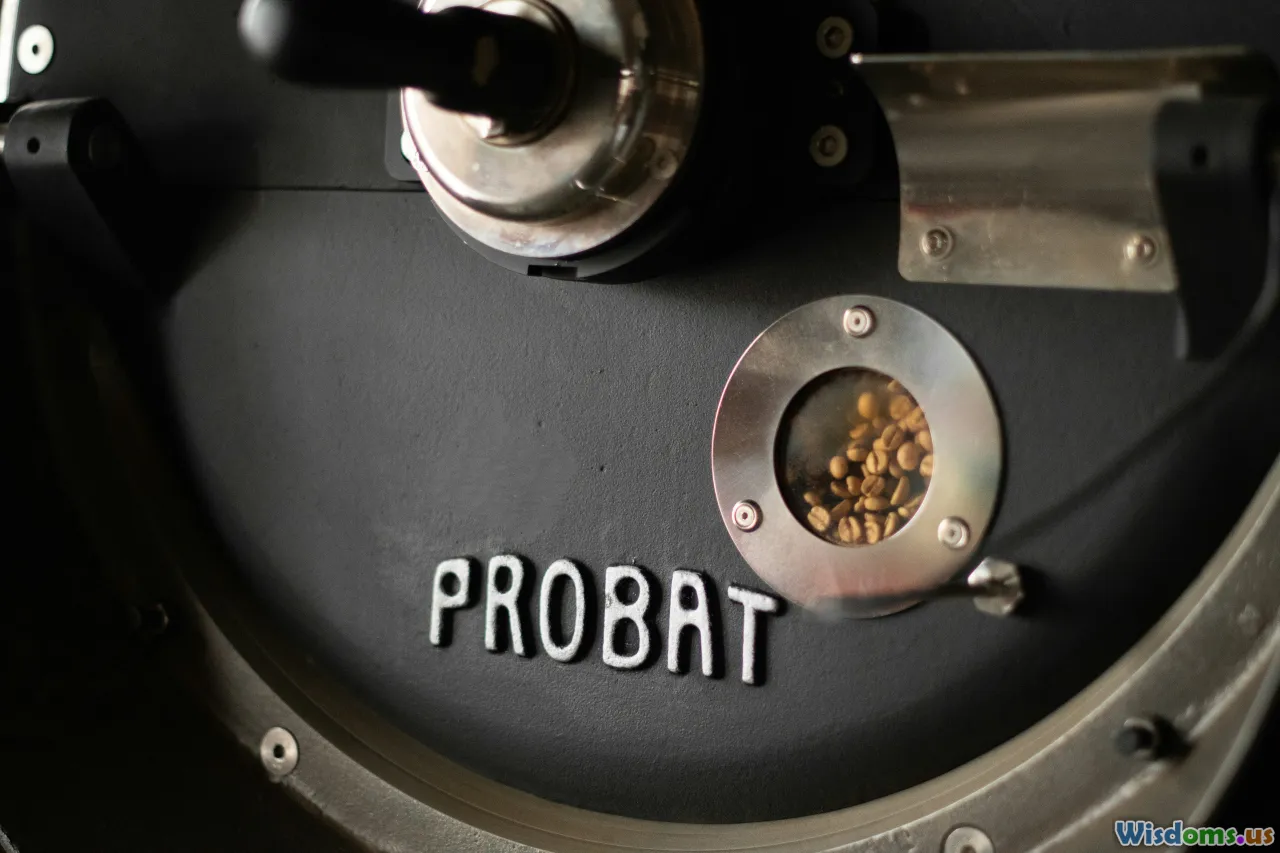
How to Spot Modern Conspiracy Trends
33 min read A practical guide to identifying modern conspiracy trends across platforms, using linguistic tells, network signals, and verification routines to separate viral speculation from evidence-based narratives. (0 Reviews)
When a friend DMs you a shaky video captioned 'Watch before it gets deleted,' you can feel the adrenaline jolt. It’s the same rush that has kept conspiracy theories alive for centuries—but the way they spread and mutate today is distinct. The speed, aesthetics, and incentives of digital platforms have produced modern conspiracy trends that are slick, memetic, and profitable. Learning to spot them is less about memorizing specific claims and more about recognizing patterns: how ideas are packaged, how they appeal to our psychology, and how they hopscotch across networks.
This guide equips you to recognize those patterns early. You’ll learn to read signals in language and visuals, trace money and motives, and apply quick investigative workflows. Along the way, we’ll dissect real-world examples, share tools you can use in minutes, and outline ways to talk with people you care about—without making things worse.
What Makes a Conspiracy Trend Modern

Modern conspiracy trends are not just fringe ideas with tinfoil wrapping; they’re highly adapted to a platform economy. Here’s what distinguishes them.
- Memetic packaging: Bite-sized, share-optimized formats—10-second reels, carousels, stitched clips—carry complex claims as easily as dance challenges. A talking-head video with captions over trending audio can reach millions before lunch.
- Influencer-driven spread: Popular fitness coaches, wellness gurus, hobby streamers, and pseudo-experts act as vectors. They fold conspiratorial tropes into content their audience already trusts (e.g., a nutrition influencer pivoting to 'public health cover-ups').
- Monetization baked in: Links to supplements, courses, merch, private communities, or donation pages are common. The story sells the solution.
- Cross-platform choreography: A claim might germinate on a niche forum, surface as a meme on X (Twitter), get a 60-second explainer on TikTok, then a 'deep dive' on YouTube or a podcast. Telegram channels and email newsletters act as backup when moderation hits.
- Pseudo-expertise with a lab-coat aesthetic: Clean infographics, serious tones, and credentials—often adjacent rather than relevant—are used to signal authority (e.g., a 'data analyst' opining on virology with a chart that looks official but is misleading).
- Chaotic chorus, consistent narrative: Multiple creators push different angles that converge on the same suspicion—shadowy elites, corrupted institutions, impending danger—creating the illusion of organic, independent confirmation.
Concrete example: During early pandemic waves, an array of content formats—from polished YouTube monologues to TikTok duets—circulated claims about miracle cures. The graphics looked clinical; the voices sounded certain; the hashtags linked to communities; the monetization grift was quiet but present (affiliate codes, private groups for 'uncensored truth').
The Psychological Hooks: Why Smart People Get Snared

Conspiracy trends thrive because they exploit universal cognitive shortcuts. Understanding these doesn’t make you immune, but it does give you guardrails.
- Proportionality bias: We intuitively match big events to big causes. Randomness is unsatisfying; conspiracies promise a suitably grand and intentional explanation.
- Hyperactive agency detection: Our brains are tuned to see deliberate agents behind patterns. In noisy data, that bias conjures puppet masters where none exist.
- Confirmation bias: We notice evidence that supports what we already suspect and disregard what doesn’t. Algorithmic feeds amplify this by showing more of what we engage with.
- Illusory truth effect: Repetition increases perceived truth. Hearing a claim from multiple sources—or multiple times from one source—makes it feel right. This effect has been replicated in studies for decades.
- Need for uniqueness: Some people are more susceptible to claims that confer insider status: 'You see what others can’t.' Researchers have linked this trait to higher conspiracy endorsement.
- Dunning–Kruger meets the illusion of explanatory depth: When an explainer video simplifies a complex domain, it can leave viewers feeling more knowledgeable than they are, confident enough to reject experts.
Empirical anchor: A widely cited 2018 MIT study of 126,000 stories on Twitter found that false news spread faster and farther than true news, particularly because it evoked surprise and disgust—emotions conspiracies excel at triggering.
Actionable guardrails:
- Name the feeling: 'This makes me feel shocked/angry.' Naming the emotion can reduce its grip and prompt deliberate thinking.
- Ask: 'What evidence would change my mind?' If the answer is 'nothing,' you’re in belief territory, not evidence evaluation.
- Time buffer: Wait 24 hours before sharing highly emotional claims. Many die on their own once context emerges.
Linguistic Red Flags You Can Scan in Seconds

Language telegraphs intent and credibility. Modern conspiracy trends often rely on predictable phrasing that signals urgency, persecution, and certainty.
Common markers:
- Absolutist framing: 'Everyone is lying,' 'This proves everything,' '100% guaranteed cover-up.' Real investigations use hedging and caveats.
- Persecution motifs: 'They don’t want you to know,' 'Banned everywhere,' 'Scientists are silenced.' Sometimes true censorship occurs, but blanket claims of suppression invite you to switch off scrutiny.
- JAQing off ('just asking questions'): A series of leading questions designed to plant suspicion without committing to falsifiable claims: 'Why are hospitals empty?', 'Is it a coincidence that…?'
- Unfalsifiable escape hatches: 'Any counterevidence is part of the cover-up.' This makes the claim immune to disproof—classic hallmark of conspiratorial thinking.
- Insider cues: 'Wake up,' 'Red pill,' 'For those who know.' These code-words build in-group identity and signal membership.
- Emotional urgency: 'Share before it’s deleted,' 'Last chance to see the truth.' Urgency preempts verification steps.
Quick scan method:
- Highlight superlatives and universal quantifiers (always, never, everyone). Replace them mentally with measured alternatives and see if the claim still makes sense.
- Track the verbs: Are there specific actions by named people, or vague attributions like 'they' and 'the elites'?
- Look for a test: Does the post propose a way to verify the claim, beyond 'wait and see' prophecy?
Visual Patterns: Memes, Charts, and 'Receipts'

Modern conspiracies understand that pictures do more than words. But visual evidence is slippery.
Red flags in visuals:
- Screenshot chains with missing context: A cropped headline, then a single line from a study, then a stray quote—arranged like a detective board—often tells a misleading story.
- Chart crimes: Truncated y-axes exaggerate changes; switching linear and log scales hides trends; cherry-picked start and end dates tell a pre-decided story. Beware cumulative graphs presented as snapshots of daily change.
- Misattributed images: Old photos relabeled for new events. A reverse image search can expose recycling.
- Watermarks that imply exclusivity: 'Leaked,' 'Shadow-banned,' 'Archive only'—designed to feel covert, not necessarily to inform.
- Deepfake and synthetic media: Lip-sync perfection is improving. Inconsistencies in blinking, lighting, or reflections can still betray fakes, but tools are needed.
Practical checks:
- Reverse image: Use Google Lens or TinEye to find the earliest appearance of a photo. If the image first surfaced years ago, today’s label is suspicious.
- Inspect the axis: If a chart’s baseline doesn’t start at zero—or jumps scale midway—question the interpretation.
- Find the study: If a screenshot quotes a paper, search the title or DOI. Read the abstract and limitations. Often the screenshot cherry-picks a sentence.
- Use video forensics: Tools like InVID can extract frames and metadata to help assess manipulation.
Example: During debates over public health policies, widely shared charts comparing country outcomes ignored confounders (population age, urban density, seasonality). The presentation was clean; the conclusions were wrong.
The Pipeline: How a Fringe Idea Becomes a Trend

Understanding the life cycle of a conspiracy trend helps you anticipate the next move.
- Seeding in low-visibility spaces: Niche forums, private groups, or small Telegram channels test narratives with receptive audiences. Ideas evolve through trial and error.
- Mid-tier amplification: Micro-influencers pick up the narratives and translate them for their communities. Cross-pollination happens via duets, stitches, quote-tweets, and panel podcasts.
- Canonization: Large accounts or media-aligned personalities give the story a 'mainstream' veneer—presenting it as a controversy that demands 'both sides.'
- Monetization: As traction grows, sellers attach products or subscriptions—'join the uncensored community,' 'buy the antidote.' Grifters integrate early and stay late.
- Migration after moderation: When platforms label or throttle content, narratives move to newsletters, alt-video platforms, and chat apps. Claims of persecution become content fuel, not a deterrent.
Telltale sign: Watch for multiple creators using the same phrasing or visuals within a short period. That often signals a coordinated push or shared playbook.
Signals From the Source: Who’s Talking and Why

Evaluate the messenger before the message.
- Credential relevance: A PhD in one field doesn’t translate across domains. Ask: Is the expertise relevant to the claim?
- History of claims: Does the account routinely predict apocalypses that never arrive? Track record matters.
- Financial incentives: Affiliate links for supplements, donation appeals tied to fear, paywalled 'uncensored truth' communities—these shape messaging.
- Network ties: Who collaborates with the account? Do they appear in a constellation of other fringe sources, boosting one another’s credibility?
- Transparency: Is the content citing sources, posting corrections, and disclosing sponsorships?
Quick checks:
- Reverse-lookup domain owners via WHOIS (unless privacy-protected) to see if multiple 'independent' sites trace to the same entity.
- Scan archived versions of their about page on the Wayback Machine to see shifts in positioning after past claims were debunked.
Data Hygiene: Quick Investigations You Can Do
You don’t need to be an OSINT pro to vet a claim. Develop a repeatable mini-workflow.
Try the SIFT method (Stop, Investigate the source, Find better coverage, Trace claims to their origin):
- Stop: Pause before sharing. Ask what you know about the source and your own emotional state.
- Investigate the source: Open a new tab to learn about the outlet or account. Look for 'About' pages, Wikipedia entries, or media bias/fact-check profiles.
- Find better coverage: Search trusted outlets or domain-specific resources (e.g., site:gov, site:edu) for the claim. If it’s true and consequential, credible coverage usually exists.
- Trace to origin: Follow screenshots back to the primary study, full video, or original document. Compare the original to what’s being asserted.
Tools to bookmark:
- Google Lens or TinEye (image checks)
- InVID (video frame analysis, keyframes)
- Wayback Machine (archived pages)
- Fact-checkers: Snopes, PolitiFact, AFP Fact Check, Full Fact, AP Fact Check, Health Feedback
- PubMed and Google Scholar for scientific claims
Time-saving tips:
- Use quotes around distinctive phrases to find the earliest version.
- Use minus operators to exclude obvious propaganda keywords.
- Check the date. Old stories rebranded as new is a surprisingly common tactic.
Debunking Without Backfire: Talking to Friends and Family

Correcting someone you care about is delicate. The goal is not to 'win'; it’s to keep the relationship intact while nudging toward better information.
- Lead with curiosity: 'What makes this convincing to you?' People share more when they don’t feel attacked.
- Affirm values, not claims: 'We both want our families safe. That’s why I checked multiple sources.'
- Use the truth sandwich: Start with the fact, briefly mention the myth, then restate the fact with context.
- Offer an alternative explanation: The brain needs a replacement story, not just a void where the myth used to be.
- Keep it specific: Correct the exact claim with the best available evidence. Scattershot debunking feels overwhelming.
- Avoid public humiliation: Private conversations reduce defensiveness.
- Know when to exit: Set boundaries if the exchange becomes abusive or circular.
Sample dialogue:
- Them: 'This video proves the treatment is being hidden.'
- You: 'I watched that too. The study it cites is a lab experiment, not a clinical trial, and the authors actually caution against generalizing. Here’s what multiple clinical studies found instead. If a larger trial changes this picture, I’m open to it—would you look at it with me?'
Platform Mechanics: Algorithms, Bots, and Incentives

Conspiracy trends flourish because the underlying mechanics reward engagement.
- Engagement-first ranking: Outrage and surprise get clicks, comments, and shares, which fuels visibility. That’s a structural incentive, not a moral failing.
- Bots and cyborgs: Automated accounts amplify hashtags and narratives. Hybrids mix automation with human oversight to avoid detection.
- Elastic communities: Temporary groups organize around hashtags, then disperse and reassemble. It’s harder to moderate and easier to reignite.
- Moderation whiplash: Content labeling or removal can temporarily boost interest among believers by feeding persecution narratives.
Empirical anchor: The 2018 MIT study found false stories not only spread faster but reached more people, especially because humans—not bots—were more likely to share them, driven by novelty. That underscores why platform tweaks alone are insufficient without user-level habits.
Practical defenses:
- Mute or unfollow accounts whose content consistently raises your blood pressure. Your feed is your environment.
- Use lists or folders to separate high-quality sources from general browsing.
- Watch your own engagement: A dunk-quote tweet still boosts the original. Screenshots without tagging can reduce algorithmic lift.
The Content Cookbook: What Conspiracy Posts Tend to Include

Once you see the recipe, it’s hard to unsee it.
Typical ingredients:
- Hook: Alarming claim packaged as urgency ('This will be gone tomorrow')
- Anecdote: A person with a story that feels relatable and emotive
- Cherry-picked stat: One number or chart that looks damning, missing context
- Visual 'receipts': Screenshots, cropped documents, shaky video
- Insider framing: 'Only a few of us notice this'
- Call to action: 'Share widely,' 'DM me for the uncensored link'
- Monetization: Links to supplements, courses, or gated communities
Work an example: A popular post shows a 'whistleblower' email cropped to one spicy sentence. The caption claims a cover-up. The CTAs say 'download before it’s scrubbed' and offer a paid newsletter for 'full details.' An hour later, a more complete email surfaces showing the sentence was quoting someone else critically. The original post stays viral because the correction couldn’t ride the same wave.
Casefiles: Recent Trends, Dissected

A few case studies illustrate how red flags cluster.
- 5G towers and disease
- Claim: Wireless towers cause widespread illness and were linked to pandemic outbreaks.
- Red flags: Temporal correlations presented as causation; maps that overlay tower density with case counts without adjusting for population; screenshots of technical papers about non-ionizing radiation misinterpreted.
- What checks showed: Epidemiologists noted that outbreaks followed travel and contact patterns, not tower concentration. Physics basics explain why non-ionizing radiation lacks the energy to damage DNA in the way implied. Regulatory exposure limits and large reviews found no credible evidence of widespread harm at permitted levels.
- Lesson: Beware maps and mashups. Without control variables, they’re storytelling, not analysis.
- A shapeshifting political mega-narrative
- Claim: A hidden cabal controls global events, with coded messages in public appearances.
- Red flags: Gamified decoding challenges; predictions that routinely fail and then get reinterpreted; a cottage industry of merch and memberships.
- What checks showed: Claims relied on anonymous drops, leader worship, and unfalsifiable loops—any disconfirming evidence became part of the bigger plan. Journalistic investigations documented monetization networks and real-world harms from harassment campaigns.
- Lesson: Prophecies that always require 'new interpretation' are not predictions; they’re retention mechanics.
- Demographic replacement panic
- Claim: Elites orchestrate population changes to disempower majorities.
- Red flags: Selective statistics without fertility context, immigration patterns stripped of policy nuance, slippery definitions of 'native,' and appeals to fear of cultural loss.
- What checks showed: Demographic shifts arise from complex, measurable factors—birth rates, aging populations, labor demands, and migration policies. The conspiracy injects agency and malice where data shows policy and socioeconomics.
- Lesson: When a macro trend is given a single villain, zoom out to multi-factor explanations.
- 'Birds Aren’t Real' (parody as inoculation)
- Claim: A satirical movement that mimics conspiracy aesthetics to teach media literacy.
- Red flags (on purpose): Overconfident tone, retro 'proof,' recruiting language.
- What checks showed: It’s explicitly a parody, used to spark conversations about credibility and indoctrination.
- Lesson: Studying parody helps you recognize the tropes without the stakes of a real harm narrative.
Healthy Skepticism vs. Cynicism

Skepticism tests claims; cynicism dismisses everything. Conspiracy trends exploit both naive trust and blanket distrust.
- Skepticism: 'What’s the evidence? Can I see the methods? How reliable are the sources?' Skeptics revise beliefs when strong evidence appears.
- Cynicism: 'Everyone lies, so I’ll believe what feels right.' Cynicism creates a vacuum that conspiracies readily fill.
Be a calibrated skeptic:
- Prefer specific over vague claims: Named people, dates, documents.
- Prefer transparent over opaque sources: Methods and data shared, corrections posted.
- Prefer converging evidence: Multiple independent lines point in the same direction.
- Update beliefs: Make it a point of pride to change your mind in public when warranted. It models intellectual honesty.
Personal Risk Management: Protecting Your Time and Sanity

Exposure carries costs: stress, time, and degraded attention.
- Set a content diet: Choose time windows for news, not constant grazing. Curate a small list of high-quality sources.
- Use focus tools: Disable autoplay, hide like counts, and set app limits. Small friction reduces doomscrolling.
- Create friction for sharing: Make a personal rule to read beyond the headline and wait 10 minutes before reposting.
- Protect mental health: If a thread leaves you anxious, step away. Curiosity works best on a regulated nervous system.
- Be mindful at night: Late-night anxiety amplifies conspiratorial content. Save heavy topics for daytime when your prefrontal cortex isn’t exhausted.
For Parents and Educators: Teaching Prebunking

The best defense is inoculation—prebunking techniques that teach youth to recognize manipulation before they encounter it.
- Play the game: Classroom-tested games like Bad News and Harmony Square let players create misinformation and then reflect on tactics. Studies from research groups have found these increase resistance to future manipulation for weeks.
- Teach lateral reading: Don’t evaluate a site while you’re on it. Open new tabs, check what others say about that source, and triangulate.
- Use the CRAAP test sparingly: Currency, Relevance, Authority, Accuracy, Purpose are useful, but combine with real-world exercises so it doesn’t become a checkbox chore.
- Normalize 'I don’t know yet': Help students feel okay withholding judgment until they see better evidence.
- Practice truth sandwiches: Have students write short corrections that state the fact, mention the myth, and restate the fact.
Parent tip: Ask kids to show you how they’d check a claim rather than telling them it’s wrong. Teaching is sticky learning.
Build Your Own Early-Warning System

You can notice trends early without making it your job.
- Set Google Alerts for recurring misleading phrases you’ve seen among friends. It helps you see when a narrative resurfaces.
- Follow a handful of credible subject-matter experts who explain without sensationalizing. Quality beats quantity.
- Subscribe to fact-check newsletters; they often cover emerging rumors.
- Keep a simple note file: Track claims you’re monitoring, the best sources you’ve found, and open questions. Treat it like a lab notebook.
- Map the network: If you spot three different accounts using the same talking points within a day, that’s a signal of coordination or shared sourcing.
Tip: Resist becoming a hall monitor. Your goal is early recognition, not constant confrontation.
Legal and Safety Considerations

Investigating or discussing conspiracy trends carries risks.
- Don’t dox: Publishing private details—even in the name of accountability—can be illegal and dangerous.
- Watch defamation: Stating false facts about identifiable people can lead to liability. Frame your critiques as opinions about claims and methods, or cite documented facts.
- Respect platform rules: Violations can get you banned, cutting you off from your community and tools.
- Secure your accounts: Use a password manager and two-factor authentication. Conspiracy-adjacent harassment campaigns sometimes target critics.
- Be mindful of in-person safety: Avoid confrontations at rallies or events. Documenting from a distance is safer.
Reading the Room: Cultural and Global Contexts

Conspiracy trends travel, but they mutate to fit local grievances.
- Historical memories: Regions with histories of medical malpractice or political repression may be more susceptible to health or governance conspiracies. For example, real-world abuses—from unethical studies to intelligence operations that posed as health campaigns—have seeded long-term distrust. Acknowledge that context when you communicate.
- Language localization: Slogans and metaphors are translated and adjusted for cultural resonance. Recognize the core narrative under the new skin.
- Event piggybacking: Elections, epidemics, and conflicts trigger surges. Expect greater volume and more polished content around these times.
- Diaspora channels: Encrypted apps and community radio can be important vectors that mainstream monitoring misses.
Advice: Approach with cultural humility. Listening builds credibility; lecturing hardens positions.
Metrics That Matter: When to Engage, Ignore, or Report

You can’t fight every fire. Decide where to spend your energy.
Consider three axes:
- Harm potential: Could the claim spur violence, medical harm, or harassment?
- Reach trajectory: Is it accelerating across platforms or confined to a small chat?
- Correctability: Are there effective corrections already available? Is the audience reachable?
A simple decision guide:
- High harm + rising reach + no correction: Engage carefully and report to platforms if policy-violating.
- High harm + low reach: Monitor, document, and prepare prebunks.
- Low harm + high reach: Consider a light-touch correction or a prebunk about tactics rather than the claim.
- Low harm + low reach: Often best to ignore to avoid signal boosting.
A Note for Creators: Immunize Your Own Content

Creators can avoid becoming unintentional amplifiers.
- Avoid sensational thumbnails and captions: Resist the cheap dopamine that comes from alarmist framing.
- Context boxes: Add a quick 'what we know/what we don’t' section. It signals honesty and reduces misinterpretation.
- Source notes: Link to primary materials and highlight limitations. Screenshots are fine; sources are better.
- Corrections policy: Make updates visible and time-stamped. Model the behavior you want from others.
- Beware cozy crossovers: Vet collaboration invites from accounts that flirt with conspiratorial content.
Keep Your Curiosity: The Positive Path Forward

The goal isn’t to become jaded; it’s to become discerning. Curiosity is a superpower when paired with method.
Practice a few habits:
- Start with questions, not conclusions.
- Separate the claim from the claimer: Even people you like can be wrong; even institutions you distrust can be right on a given topic.
- Make uncertainty a friend: It’s okay to say 'I don’t know yet.' Uncertainty is honest and temporary when you keep looking.
- Build resilient communities: Share good sources, celebrate corrections, and model calm inquiry. Group norms beat solo vigilance.
You’ll still see wild claims. Some will be entertaining. Others will be dangerous. But with the patterns in hand—the linguistic red flags, visual tells, psychological hooks, network pipelines, and practical tools—you’ll be equipped to spot modern conspiracy trends before they spot you. That lets you hold on to the best part of the internet—serendipitous learning—without getting pulled under by the undertow.
Rate the Post
User Reviews
Popular Posts














